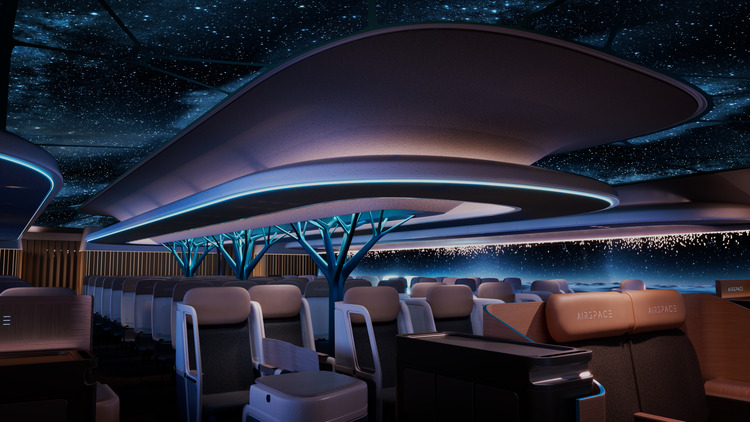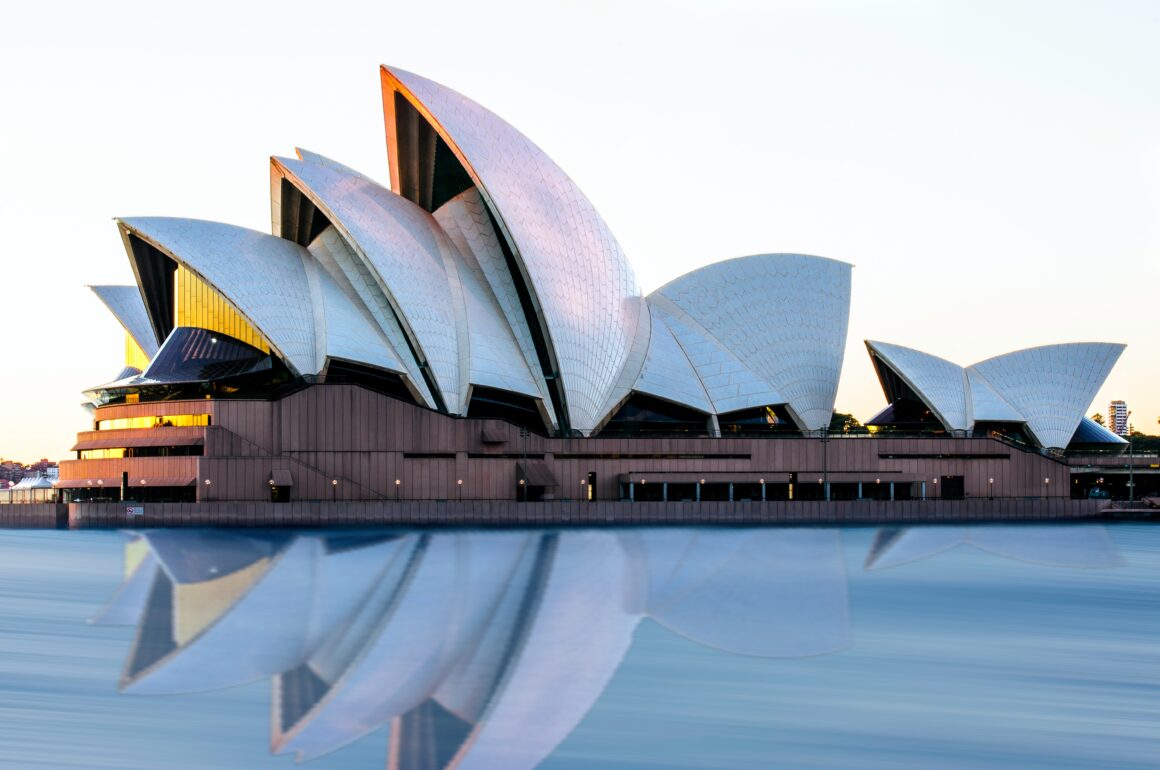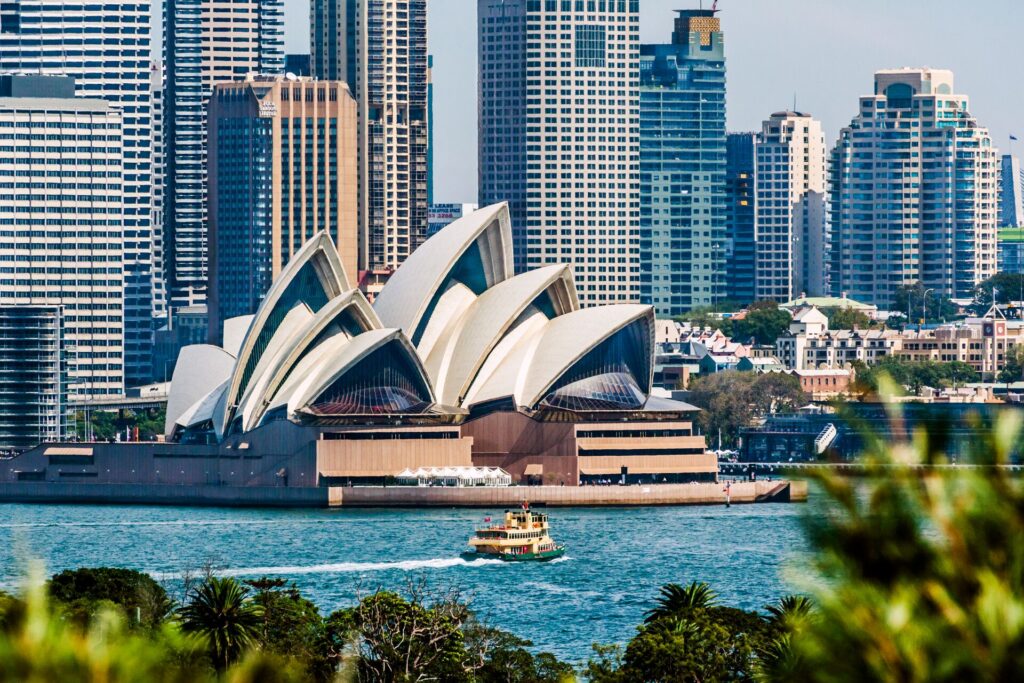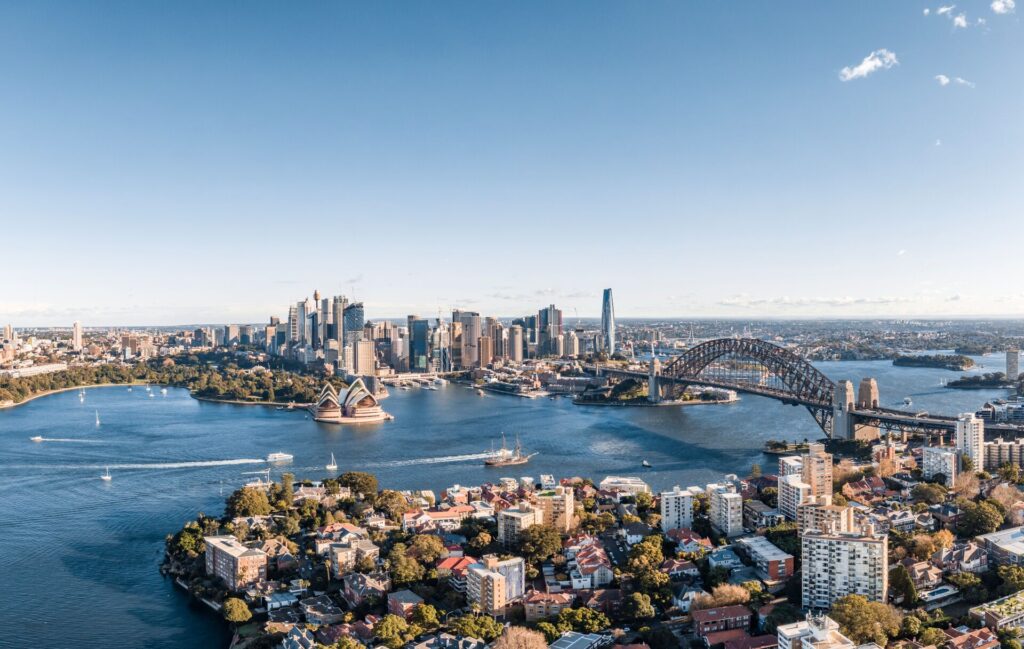Transparent ceilings, lie-flat beds, and dedicated wellbeing zones? Welcome to the future of air travel. As travelers are now expecting more comfort, entertainment, and sustainability on their flights, airlines are racing to develop the most innovative aircrafts – and they’re coming up with some extraordinary designs. We take a look at some of the best recent designs that are set to revolutionize air travel.
Air New Zealand’s Skynest – Lie-flat beds in Economy

As flights get longer and seats get smaller, travelers are now more likely to favor the airlines that can provide the most comfortable travel experience. And Air New Zealand are listening. The progressive airline is redefining long-haul travel with the introduction of Skynest, offering lie-flat bunks to Economy-class passengers. If you’ve ever struggled to get some good shut-eye on your flight (haven’t we all?) this will be a welcome slice of luxury.
Set to debut in 2024, the Crystal Cabin award-winning design aims to enhance the comfort of passengers on ultra-long-haul routes. They’ll fly on the non-stop services between Auckland and US cities like New York and Chicago, a grueling journey that takes around 17 hours.
Passengers can reserve a bunk in four-hour slots at a cost of around NZD$400-600 and each person will be limited to one session. The four-hour duration was chosen as it allows passengers to get some much-needed sleep while offering availability to more customers.
The Skynest will have six full-length beds in pods, configured in a space-efficient V-shape to ensure privacy. The beds measure over 79 inches long and 23 inches in width at the shoulder area. Each pod will have sheets, a blanket, a full-size pillow, ear plugs, a personal USB outlet and reading light, and a ventilation outlet. The lights will gently come on at the end of the session, and if you sleep through it, the crew will be there to help you wake up. The bedding will be changed between each session. Each pod will also have a separate seatbelt so passengers can stay in the pod when the seat belt signs come on. Sounds like they’ve thought of everything!
Qantas’ Airbus A350s – Wellbeing zones and ergonomic seating

Qantas has also been listening to requests for more flying comfort. The airline’s newly unveiled Airbus 350s will fly nonstop from Sydney to New York and London starting late 2025, carrying 238 passengers on journeys spanning up to 22 hours. That sounds incredibly demanding, however, Qantas has been working to shake up long-haul travel.
The design includes a first-of-its-kind Wellbeing Zone. Located between the Premium Economy and Economy cabins, the Wellbeing Zone features a hydration station and refreshments. There’s also on-screen exercise programs and sculpted wall panels with handles, so you can stretch and keep the blood flowing during the flight.
There’s more good news for when you’re actually in the seats. They have the largest seat pitches of any Qantas aircraft, with a minimum of 33 inches of legroom in the Economy seats. There’s also ergonomic leg and footrest systems and plenty of storage. Every seat is outfitted with multiple USB-C charging ports, while Premium seats include integrated wireless charging. You’ll also find fast, free WiFi and Bluetooth connectivity, allowing passengers to connect their personal headsets to individual screens.
The First and Business cabins are taking luxury air travel to the next level. The First Class Suite is reminiscent of a boutique hotel room. It features a 2-meter flatbed, dining table, recliner chair, and a 32″ 4k ultra-high definition touch screen TV. Meanwhile, the 52 Business Suites offer sliding doors for privacy, lay-flat beds, large dining tables, and an 18″ 4k ultra-high definition touchscreen TV.
David Caon is the Australian designer behind the cabin layout. He worked to integrate world-first scientific research on jet lag reduction and wellbeing into the A350 design. All in all, the new aircraft will offer passengers a far more comfortable travel experience.
Airbus’ Airspace Cabin Vision 2035+ – Transparent ceilings and sustainable cabins
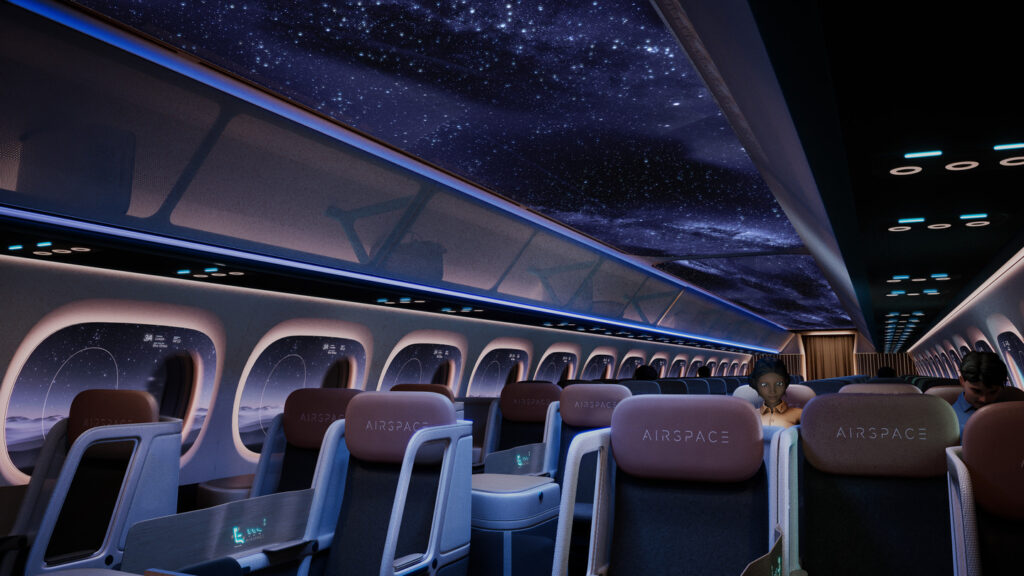
While travelers are demanding more comfort in the air, they’re also expecting more sustainability when it comes to air travel. Aeroplanes have traditionally been a fuel-guzzling, carbon-emitting beast, however, sustainable air travel may be closer than we think with Airbus’ new Airspace Cabin Vision 2035+.
Research shows the cabin contributes to an estimated 10-20% of an aircraft’s overall environmental footprint. Airbus plans to utilize bionic design principles to reduce cabin weight by 40%. This would also significantly lower fuel consumption and emissions. Airbus’ commitment to “rethink, recycle, repair and re-use” extends to all components. Everything from seats and lining to galleys can be created with bio-based fabrics, recycled polymers, and 3D printing technologies.
The most eye-catching feature is the cabin’s transparent ceilings. No matter where you’re sitting, all passengers will enjoy a spectacular view of the sky and stars above. They’ve also taken inspiration from older eras of air travel. Passengers on short flights can collect pre-ordered meals at the boarding gate. This means galleys can be reduced or even eliminated altogether for some flights. The groundbreaking design signals a significant shift towards a more sustainable and efficient aviation industry.
Airbus has partnered with multiple technology companies and different airlines, including Lufthansa and Delta, to make this all a reality. Changes to the existing Airbus cabin will begin this year, and they’re aiming to take to the skies by 2035.



